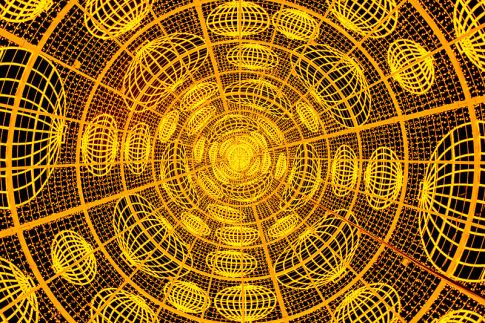IoT devices can be anything with computing power and an Internet connection. Phones, tablets, PCs and games consoles can all be the ‘things’ in the Internet of Things. Even refrigerators, cars, washing machines and stand-alone sensors like web cams – if they have a web connection. And all the apps on your phone certainly have computing power and an Internet connection.

The ‘Internet of Things’ and the ‘Internet of Everything’ just mean collections of different devices and apps that work together with some common theme, which is usually called an ‘ecosystem’. The healthcare IoT ecosystem is the collection of all the devices that medics use on their patients. The Quantified-Self ecosystem is like the healthcare ecosystem but it is more about the devices and apps that we use ourselves, to monitor our own activity levels and our bodies.
For example, Fitbit and Jawbone gather physical activity data, Scanadu is a urine testing system that can be measured by a camera phone, Quealth assesses your risks for five major diseases, and there are many IoT sensor products.
Some early stage IoT ecosystems are themed around smart cities, which aim to use digital technologies to manage key services like food, energy, communications and transport as well as citizen participation. Smart cities need smart buildings, which are a whole ecosystem in themselves. And smart buildings are full of smaller devices that are owned by different people who do not necessarily own or live in the smart building itself.
IoT devices need to connect with each other
The key to the IoT is that the ‘things’ can connect to the Internet to help users to use them and to get better at doing so. An IoT toothbrush can use your phone as a keyboard, a touch screen and a dashboard to display how you clean your teeth every day. And it can make suggestions based on how other people do it or on the latest dental research.
Each device’s Internet connection allows it to compare how you clean your teeth with anyone else that uses a connected toothbrush. Learning from other users is a great way to make any product easier and more successful to use. The same applies to the Waze app as it crowdsources warnings of delays and snippets of journey advice. Rolls-Royce also learns from huge numbers of its engines by using sensors to track their health in real-time as they fly around the world.
Without an Internet connection each IoT device is just a device. But when lots of devices link up they potentially get access to two things – all the other devices’ perspectives and all the other devices’ capabilities.
The other devices’ perspectives are like when Wayz users share information about delays or traffic jams, as they experience them. The other devices’ capabilities are like when the purpose of one device complements the purpose of another device.
For example, your home weighing scales, the treadmill at your gym, your refrigerator and your supermarket shopping app could all share information with a cooking app on your phone. The cooking app could then suggest meal recipes based on your weight, your exercise levels, what you have in your refrigerator and the ingredients will be delivered that evening.
The scales, the treadmill, the refrigerator and the two app have different perspectives on your life, their sensors ‘see’ different things. These devices and apps also have different capabilities to do different things for you. Like ordering ingredients or making recipe suggestions.
Even a passive device like your home weighing scales can make useful suggestions, if it knows more about your life than just your weight.
The success of an IoT ecosystem is based on the ‘network effect’.
The ‘network effect’ is the idea that the more members in a network there are then the more valuable it is to be a member of that network. The opposite of this idea is like when a new social network has very few members.
In the IoT, the more devices that connect with each other than the more perspectives and capabilities there are to potentially be shared.
But the challenge for ecosystem builders is to figure out which devices to link together into an ecosystem. And not just devices. Apps, firms, government departments, public services and consumers are all potential members of the Internet of Everything. You cannot link and share with every single one, so how do you choose?
One way to choose is to focus on a theme – health, travel, a sport or a particular job role. But there are still many firms to partner with and many sources of data to potentially access.
In the next post I’ll explain how to choose partners and devices to build an ecosystem from and how to persuade them. I’ll take some ideas from natural ecosystems and use them to show you how to build your own IoT ecosystem around your device, app or business.